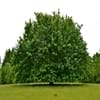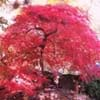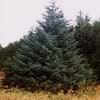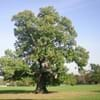Life Span
Perennial
Annual
Origin
Western United States, Northwestern United States, California, Canada
Central America, South America
Types
Black Maple, Mountain Maple,
Norway Maple
Willow Leaf, Sieva Lima, Dixie Speckled
Habitat
Riverbanks, Stream side
Humid climates, Subtropical climates, Warmer regions
USDA Hardiness Zone
5-9
6-11
AHS Heat Zone
9-4
Not Available
Sunset Zone
4, 5, 6, 7, 8, 9, 10, 11, 12, 13, 14, 15, 16, 17
Not Available
Habit
Oval or Rounded
Vining/Climbing
Minimum Width
Not Available
Flower Color
Yellow, Red, Green
White, Ivory
Flower Color Modifier
Bicolor
Bicolor
Fruit Color
Yellow, Red, Green, Sandy Brown
Green
Leaf Color in Spring
Light Green, Yellow green
Green
Leaf Color in Summer
Green
Green
Leaf Color in Fall
Gold
Green
Leaf Color in Winter
Not Available
Green
Leaf Shape
Irregular
Willow-shaped
Plant Season
Spring, Summer, Fall
Not Available
Sunlight
Partial Sun, Partial shade
Full Sun
Type of Soil
Clay, Loam, Sand
Loam, Sand
The pH of Soil
Acidic, Neutral, Alkaline
Acidic, Neutral, Alkaline
Soil Drainage
Average
Well drained
Bloom Time
Early Spring, Spring
Indeterminate
Tolerances
Not Available
Drought
Where to Plant?
Ground
Container, Ground, Pot
How to Plant?
Seedlings
Seedlings
Plant Maintenance
Medium
High
Watering Requirements
Do not let dry out between waterings, Keep ground moist, Requires regular watering
Allow to dry out slightly between watering, Do Not over Water, Requires regular watering
In Summer
Lots of watering
Not so frequently
In Spring
Moderate
Alternate Days
In Winter
Average Water
Drought Tolerant
Soil pH
Acidic, Neutral, Alkaline
Acidic, Neutral, Alkaline
Soil Type
Clay, Loam, Sand
Loam, Sand
Soil Drainage Capacity
Average
Well drained
Sun Exposure
Partial Sun, Partial shade
Full Sun
Pruning
Remove branches, Remove damaged leaves, Remove dead branches, Remove dead leaves, Remove dead or diseased plant parts
Prune to control growth
Fertilizers
All-Purpose Liquid Fertilizer, Nitrogen
organic fertlizers
Pests and Diseases
Red blotch
Aphids, Armyworm, Bean rust, Bean weevils, Corn earworm, Cucumber beetles, Curly top, Damping off, Darkling beetles, Earwigs, Fusarium root rot, Grasshoppers, Leafhoppers, Loopers, Lycaenid pod borers, Lygus bugs, Mosaic viruses, Nematodes, Powdery mildew, Saltmarsh caterpillar, Seedcorn maggot, Slugs, Snails, Spider mites, Stink bugs, Thripes, White mold, Whiteflies
Plant Tolerance
Not Available
Drought
Flowers
Yes
Insignificant
Flower Petal Number
Single
Single
Fragrant Flower
No
Not Available
Fragrant Fruit
No
Not Available
Fragrant Leaf
No
Not Available
Fragrant Bark/Stem
No
Not Available
Showy Bark
No
Not Available
Foliage Texture
Coarse
Medium
Foliage Sheen
Matte
Matte
Self-Sowing
Yes
Not Available
Attracts
Bees, Birds, Flying insects, Insects
Not Available
Allergy
Pollen
Not Available
Aesthetic Uses
Not Available
Not Available
Beauty Benefits
Improve hair condition
Not Available
Environmental Uses
Air purification, Nesting sites for birds, Shadow Tree, Wildlife
Not Available
Medicinal Uses
Tonic, tuberculosis
cholesterol-lowering, constipation, Digestive disorders, Fiber, Heart problems
Part of Plant Used
Flowers, Sap, Tree trunks
Seeds
Other Uses
Application in Furniture, Basketary, Can be made into a herbal tea, Decorative veneers, flooring, paneling, Edible syrup, Fibre, Making piano frames, Used as firewood, Used as fuel, Used in salads
Used As Food
Used As Indoor Plant
No
No
Used As Outdoor Plant
Yes
Yes
Garden Design
Feature Plant, Shade Trees
Edible, Herb, Vegetable
Botanical Name
ACER macrophyllum
PHASEOLUS lunatus
Common Name
Big-leaf Maple, Oregon Maple, Pacific Maple
Butter Bean, Lima Bean
In Hindi
बड़ा पत्ता मेपल के पेड़
सेम फली
In German
Big Blatt Ahornbaum
Limabohne
In French
Grande feuille Érable
Haricot de Lima
In Spanish
Gran hoja del árbol de arce
Haba
In Greek
δέντρο Maple μεγάλο φύλλο
Γίγαντας
In Portuguese
Árvore de bordo Folha grande
feijão-Lima
In Polish
Duży liść klonowy
Lima Bean
In Latin
Big Maple folia ligni
Lima Bean
Phylum
Magnoliophyta
Tracheophyta
Class
Magnoliopsida
Magnoliopsida
Family
Aceraceae
Fabaceae
Clade
Angiosperms, Eudicots, Rosids
Angiosperms, Eudicots, Rosids
Tribe
Not Available
Phaseoleae
Subfamily
Not Available
Faboideae
Number of Species
Not Available
Importance of Big leaf Maple and Lima Bean
Want to have the most appropriate plant for your garden? You might want to know the importance of Big leaf Maple and Lima Bean. Basically, these two plants vary in many aspects. Compare Big leaf Maple and Lima Bean as they differ in many characteristics such as their life, care, benefits, facts, etc. Every gardener must at least have the slightest clue about the plants he wants to plant in his garden. Compare their benefits, which differ in many ways like facts and uses. The medicinal use of Big leaf Maple is Tonic and tuberculosis whereas of Lima Bean is cholesterol-lowering, constipation, Digestive disorders, Fiber and Heart problems. Big leaf Maple has beauty benefits as follows: Improve hair condition while Lima Bean has beauty benefits as follows: Improve hair condition.
Compare Facts of Big leaf Maple vs Lima Bean
How to choose the best garden plant for your garden depending upon its facts? Here garden plant comparison will help you to solve this query. Compare the facts of Big leaf Maple vs Lima Bean and know which one to choose. As garden plants have benefits and other uses, allergy is also a major drawback of plants for some people. Allergic reactions of Big leaf Maple are Pollen whereas of Lima Bean have Not Available respectively. Having a fruit bearing plant in your garden can be a plus point of your garden. Big leaf Maple has no showy fruits and Lima Bean has no showy fruits. Also Big leaf Maple is flowering and Lima Bean is not flowering . You can compare Big leaf Maple and Lima Bean facts and facts of other plants too.





